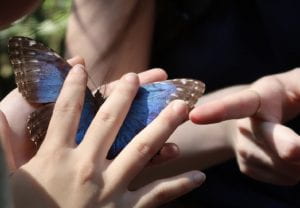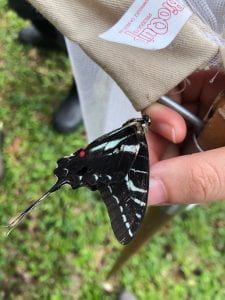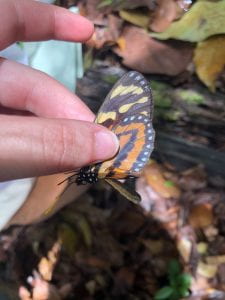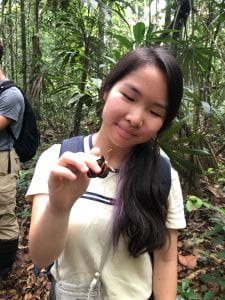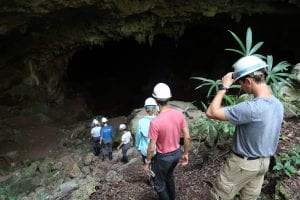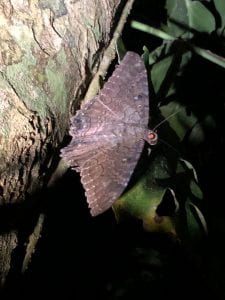As you can guess from the title, today was indeed the first day that I have successfully caught a butterfly in my net!!! I caught a Dirce Beauty at the top of our toughest hike yet. My feet are still aching from this STEEP incline, but it was so worth it because not only did I catch a butterfly at the top, but we also got to go to the top of the bird watch tower to see the sunset. It was such a beautiful view, and I got to see a big group of dirce beauties all huddled in a corner. I think this reinforces my theory that these butterflies prefer open areas.
We also had another cool night hike on the way back. I got to see a lot of moths on our path. I noticed that when there is not a big light around like there is at the field station, the moths can actually be pretty still and like to rest under big leaves. I think one of the moths might have been a tetrio sphinx moth, but I don’t think the others are on my taxon ID sheet.
Earlier in the day, we got to get a tour of a huge cave. You have to get special access to enter this cave and we can’t post any pictures from inside. We saw how the stalagmites and stalactites get formed via the acidic water and limestone. It was cool to see how small little drops turn into huge structures over millions of years. I also enjoyed learning about how the Maya used the caves and seeing the archeological finds.
After lunch we analyzed the invertebrates that we collected in our pitfall traps and presented our findings. We found hundreds of bugs, so it took us a while to tally them all up, but once we did, we were able to see how vertical stratification in rainforests impact nutrient limitation in invertebrates.
Tomorrow is our last day! I can’t believe that we are almost leaving Las Cuevas.


